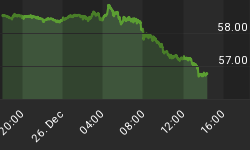PayPal is on yet another tear: It just tied the knot with Google, and now it’s launching the Venmo credit card, so investors should be eyeing another generous revenue stream soon enough.
PayPal-owned, peer-to-peer (P2P) payments app Venmo, has launched a Mastercard-branded debit card that will make it easier for Venmo users to spend their money in more places, and anywhere that accepts Mastercard.
The move is PayPal’s latest attempt to generate revenue from Venmo, as most peer-to-peer transactions between users are conducted for free. Venmo started a beta program for the new cards last year, and they are now available in limited release.
Card purchases show up in the Venmo transaction history so that users can split with Venmo friends and share what they bought on the feed. That means no more long, painful bill splitting. The Venmo Mastercard is issued by The Bancorp Bank and is available only in the U.S.
Released in 2009, Venmo rose to popularity among app-obsessed Millennials because it let them send money to each other. But the new debit card takes this much further, allowing users to spend their Venmo balances in the physical world without requiring any transfers.
Venmo has been a major player in the peer-to-peer payment scene the past few years, but the competition in this market is becoming fierce.
It is estimated that this year the total number of P2P mobile payment users in the US will grow nearly 30 percent to reach 82.5 million people—in other words, over 40 percent of the country’s smartphone users. The total transaction value of mobile P2P payments is to grow 37 percent this year to reach just over $167 billion. By 2021, it is expected to surpass $300 billion.
Related; How Venezuelans Are Using Bitcoin In Their Daily Lives
Venmo, of course, is well-positioned to take a huge chunk of this market. It’s payment volume rose 97 percent last year to $35 billion. And for Q1 2018, it was up 80 percent to $12.3 billion. That represents one-quarter of PayPal's total first-quarter mobile payment volume, which rose 52 percent to $49 billion.
Venmo’s key rival, Square Inc., one-upped PayPal last year when it started letting Square Cash app users get prepaid cards. And it’s been quite successful in monetizing this offering. And that is the key challenge to Venmo.
But this playing field isn’t reduced to just Venmo and Square: There’s plenty of up-and-coming competition to deal with.
Newbie Zelle, backed by a network of over 30 U.S. banks, wants to take on both Venmo and Square, and it’s got closer links to user bank accounts, debit cards, and other banking services.
Zelle is expected to grow by more than 73 percent this year to reach 27.4 million U.S. users, topping Venmo’s 22.9 million users. Square Cash has only 9.5 million users.
But PayPal has other tricks up its sleeve. Last month, it acquired Swedish startup iZettle for $2.2 billion. iZettle sells mobile credit card readers and other payment platforms and will help PayPal further expand globally, moving against Square has been trying to home in on iZettle’s market in the UK.
With $132 billion in total payment volume in Q1 2018—a 27-percent increase year-over-year, helped by a 35-percent increase in active users—PayPal is on the top of investor radar right now, not the least because it’s been solidifying its relationship with Google.
By the end of this year, the plan is to allow customers to extend that seamless integration into bill pay and peer-to-peer payments for everything from Google Pay and Gmail to Google Store and YouTube.
Making Venmo more usable and revenue-generating was the next step.
By Fred Dunkley for Safehaven.com
More Top Reads From Safehaven.com:

















